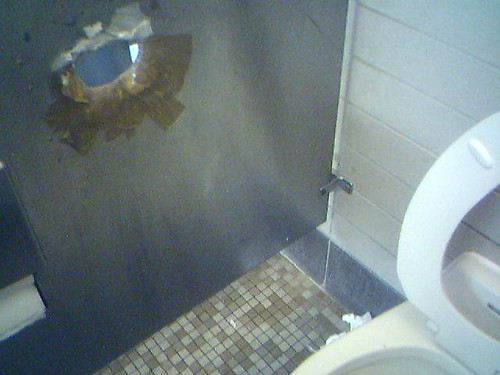I have stumbled across a preexisting way that homeless are categorized or at least identified.
This is what it means to be Homelesss In Los Angeles:
(notice this is strait off the website...)Homeless Definitions
Chronic Homelessness - An unaccompanied homeless individual with a disabling condition who has either been continuously homeless for a year or more or has had at least four (4) episodes of homelessness in the past three (3) years.
Homeless - A person is considered homeless only when he/she resides in one of the places described below:
- In places not meant for human habitation, such as cars, parks, sidewalks, abandoned buildings (on the street).
- In an emergency shelter.
- In transitional or supportive housing for homeless persons who originally came from the streets or emergency shelters.
- In any of the above places but is spending a short time (up to 30 consecutive days) in a hospital or other institution.
- Is being evicted within a week from a private dwelling unit and no subsequent residence has been identified and the person lacks the resources and support networks needed to obtain housing.
- Is being discharged within a week from an institution, such as a mental health or substance abuse treatment facility or a jail/prison, in which the person has been a resident for more than 30 consecutive days and no subsequent residence has been identified and the person lacks the resources and support networks needed to obtain housing.
- Is fleeing a domestic violence housing situation and no subsequent residence has been identified and the person lacks the resources and support networks needed to obtain housing.
Sub-Population Definitions
General Groups:
Family - Family is defined as any of the following: Minor parents with child(ren); one or more adults with legal custody of minor child(ren); a couple in which one person is pregnant; grandparents or others who are legal guardians with child(ren) present; multi-generational families with grandparents, parents (adult child) and minor child(ren).
Individual - A person over age 18, not accompanied by minor child(ren).
Specific Groups:
Domestic Violence, Families - Families that are homeless due to an abusive partner. The abuse could be physical, mental, or emotional. The cause of the family homelessness or housing instability must be related to domestic violence.
Domestic Violence, Individuals - Individuals who became homeless because of an abusive partner. The abuse could be physical, mental, or emotional.
Dually Diagnosed, Individuals - Individuals who are substantially limited in one or more major life activity by mental illness and alcohol or drug addiction. Persons with other diagnoses qualify under multiple diagnoses.
Elderly Homeless - An elderly homeless individual is 62 years old or older.
Homeless Emancipated Foster Youth - Young adults who have reached majority age (18 years), were in the foster care system and who now have no other home.
Homeless Veterans - An eligible Veteran is defined as one who: (1) served on active duty in the US armed forces for more than 160 days and was discharged with other than a dishonorable discharge; (2) was discharged or released from active duty because of a service connected disability; or (3) served on active duty during a period of war, or in a campaign or expedition to which a campaign badge is authorized.
Individuals with Disabilities - A person has a disability if she or he has at least one of the following: (1) has a physical or mental impairment that substantially limits a major life activity, (2) has a record of such an impairment, or (3) is regarded as having such an impairment.
Individuals with multiple diagnoses - Individuals whose ability to live independently is impaired by two or more of the following conditions: Physical disability (including HIV/AIDS), mental disability, substance abuse. This may include a diagnosis of multiple physical disabilities, multiple mental disabilities, or the combination of the two.
Mentally Ill, Families - Families in which at least one member is substantially limited in one or more major life activity by mental illness, based on confirmed clinical diagnosis, or initially by referral or staff assessment and later confirmed by clinical diagnosis.
Mentally Ill, Individuals - Individuals substantially limited in one or more major life activity by mental illness, based on confirmed clinical diagnosis, or initially by referral or staff assessment and later confirmed by clinical diagnosis.
Substance Abuse, Individuals - Individuals who have acknowledged addiction problems related to alcohol and drug use and who seek services or housing to support their sobriety.
Youth, 12-24 - Unaccompanied persons, age 12 to 24. Youth may have run away or were forced out of their home and are not in the company of a parent or guardian, and who may or may not be legally emancipated. I am also looking for other ways to profile homeless person but this is quite thorough.
And if any ones knows where to find a glory hole
please tell me. Thanks.










